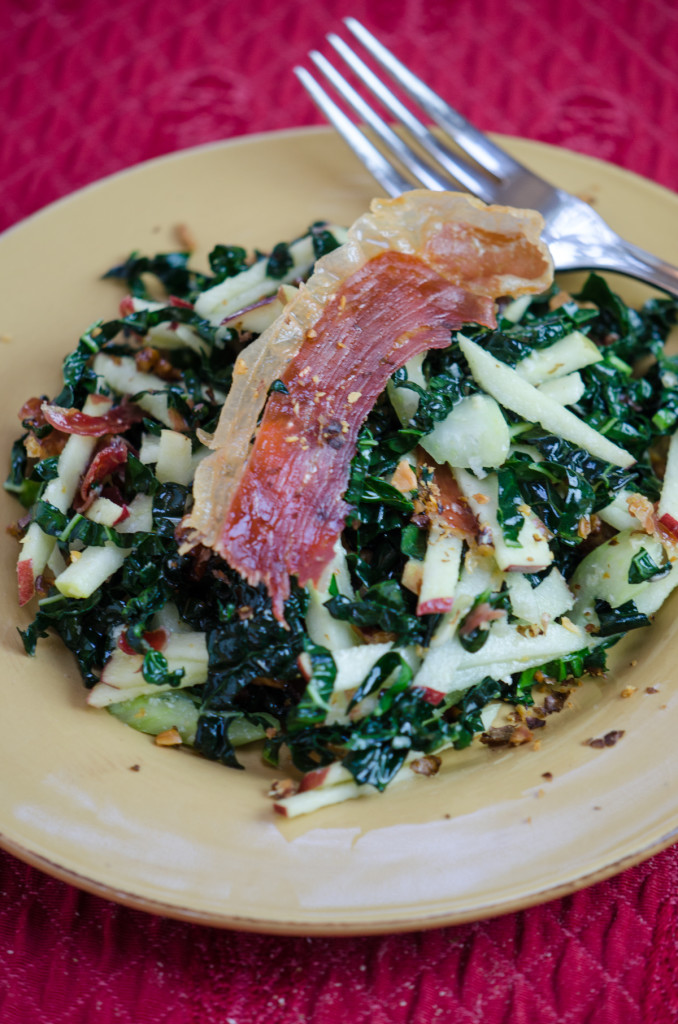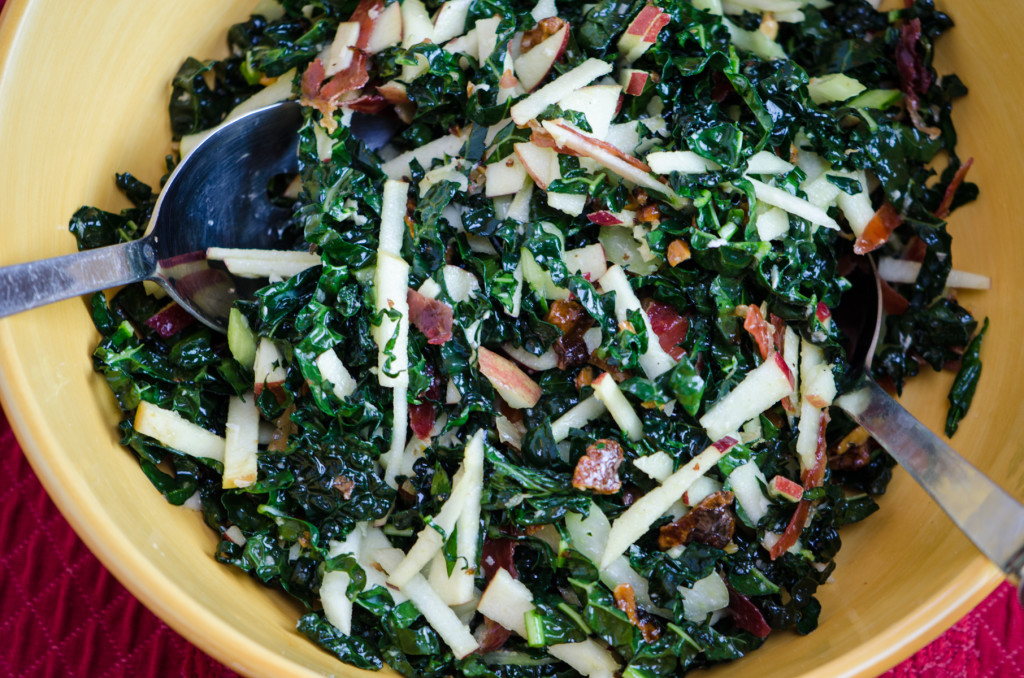 In the mood for a hearty winter salad, the flavor combinations here came to me one night as I drifted off to sleep after spending a day researching the foods of Trentino-Alto Adige for our upcoming custom cycling tours through this region. This is not a traditional regional Italian dish, but inspired some of my favorite ingredients from our explorations in Tuscany and Alto Adige.
In the mood for a hearty winter salad, the flavor combinations here came to me one night as I drifted off to sleep after spending a day researching the foods of Trentino-Alto Adige for our upcoming custom cycling tours through this region. This is not a traditional regional Italian dish, but inspired some of my favorite ingredients from our explorations in Tuscany and Alto Adige.
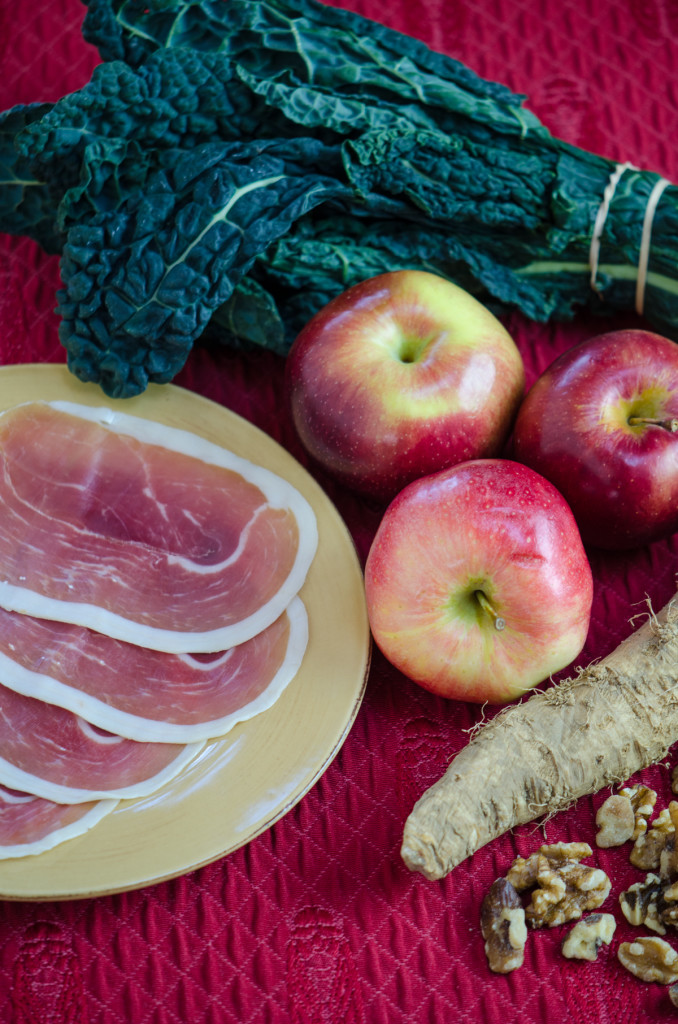 Lacinato kale, called cavolo nero (“black kale”) is a variety of kale with a long tradition in Tuscan cuisine. It is also known as Tuscan kale or Tuscan cabbage, and is one of the traditional ingredients of the Tuscan soup ribollita.
Lacinato kale, called cavolo nero (“black kale”) is a variety of kale with a long tradition in Tuscan cuisine. It is also known as Tuscan kale or Tuscan cabbage, and is one of the traditional ingredients of the Tuscan soup ribollita.
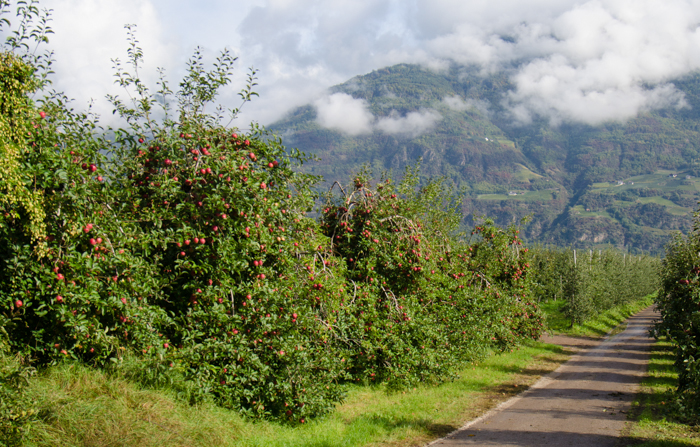 Apple orchards wind their way across Italy’s northeast area, from Valsugana, continuing along the Adige Valley and then straight to the epicenter of apple cultivation, the Val di Non and Val di Sole. More than four million apples of all varieties and sizes are produced each year in these valleys. Apples appear in the local cuisine of Trentino and Friuli-Venezia Giulia in a variety of ways, most commonly in the local desserts and cakes, such as the very common apple strudel. You will also see it in savory dishes, often paired with pork. I’ve even enjoyed an apple risotto.
Apple orchards wind their way across Italy’s northeast area, from Valsugana, continuing along the Adige Valley and then straight to the epicenter of apple cultivation, the Val di Non and Val di Sole. More than four million apples of all varieties and sizes are produced each year in these valleys. Apples appear in the local cuisine of Trentino and Friuli-Venezia Giulia in a variety of ways, most commonly in the local desserts and cakes, such as the very common apple strudel. You will also see it in savory dishes, often paired with pork. I’ve even enjoyed an apple risotto.
The most prominent cured meat in the Alto Adige region is its smoked prosciutto, known as speck. Not to be confused with the German speck, which is known in Italy as “lardo”, an Italian speck is a prosciutto, which prior to the 18th century was referred to as “bachen”, or bacon, in Tyrol. Here, you see once again the merging of influences characteristic to the foods of this region; the smoking method from the Austrian and Germanic cuisine to the north, and the salting and spices from the Adriatic regions to the south.
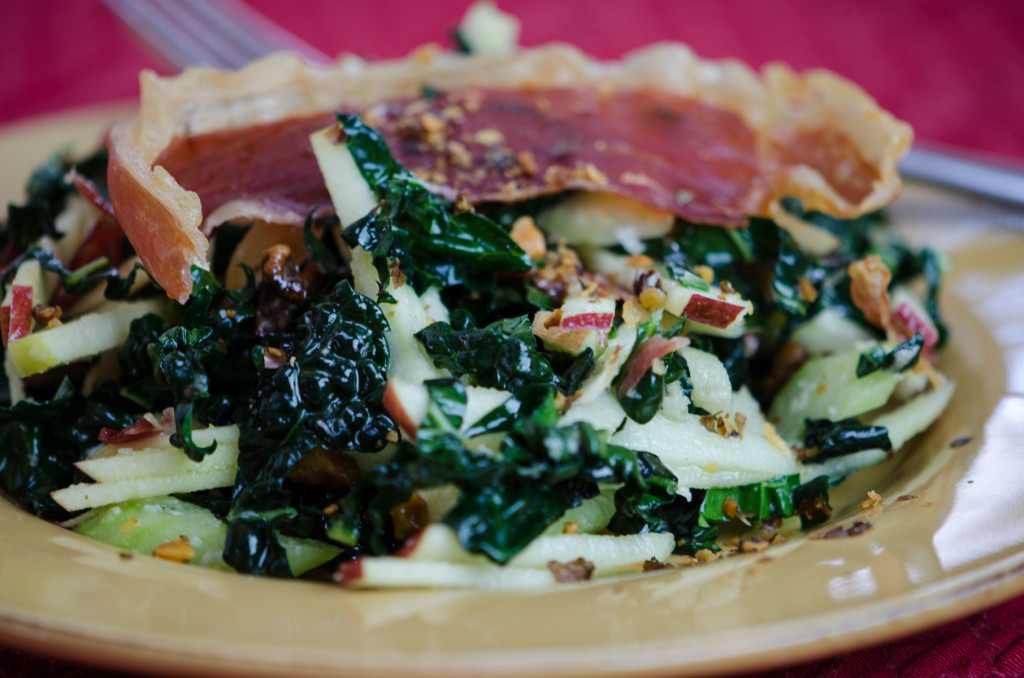 North of the Alps, ham is traditionally preserved through smoking techniques. In the south, in regions like Emilia Romagna, prosciutto is typically air-dried. Tyroleans combine both methods to create their typical Speck Alto Adige: alternately lightly smoked and cured in the fresh mountain air; in keeping with ancient traditions. Historically produced in the local farmhouses, today, modern methods are used to season, smoke and cure the speck.
North of the Alps, ham is traditionally preserved through smoking techniques. In the south, in regions like Emilia Romagna, prosciutto is typically air-dried. Tyroleans combine both methods to create their typical Speck Alto Adige: alternately lightly smoked and cured in the fresh mountain air; in keeping with ancient traditions. Historically produced in the local farmhouses, today, modern methods are used to season, smoke and cure the speck.
Like prosciutto, speck is made from the hind leg of a pig, but, unlike prosciutto, speck is deboned before curing. After deboning, it is divided into large sections called “baffe”, which are then salted and cured in a spice mixture, the specifics of which would be carefully guarded by each producer, but typically would include juniper, pine, cinnamon, nutmeg, bay, garlic and coriander. After several weeks of curing, the speck is smoked. Smoking occurs slowly and intermittently, for only 2-3 hours per day, over a period of one week to 3 months. After smoking, the speck is then aged for approximately 22 weeks, the actual time determined by the final leg weight, before it is ready to enjoy.
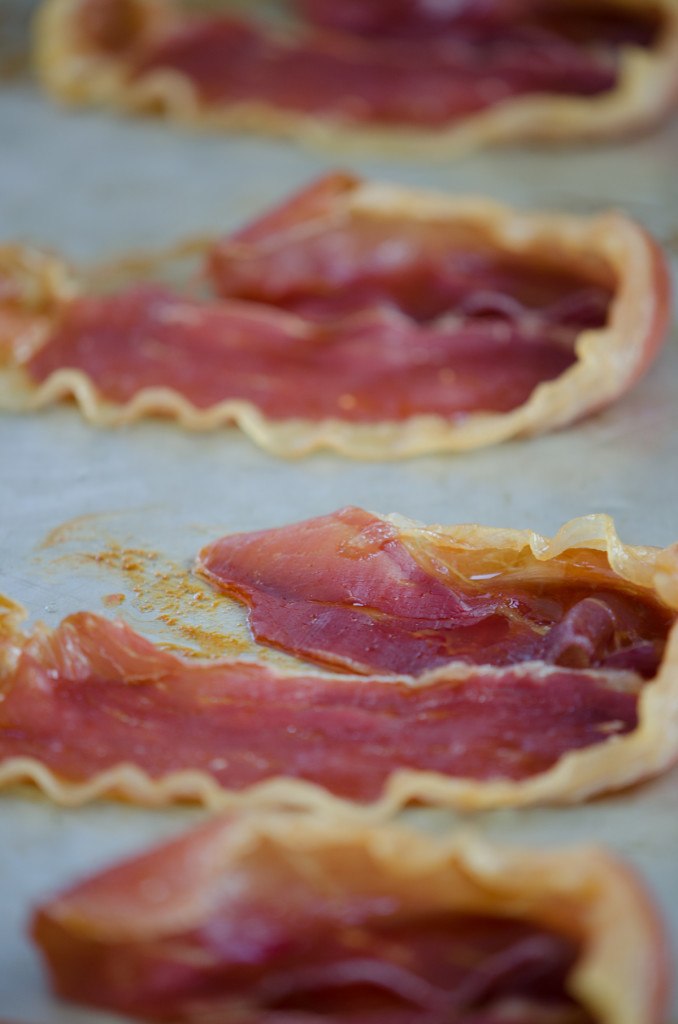 To give a nice crunch to the salad, I dry the speck in an oven, and crumble it on the salad. “Italian bacon bits” as one of my cooking students exclaimed. The most difficult part of making this salad is not consuming all of the dried speck before serving.
To give a nice crunch to the salad, I dry the speck in an oven, and crumble it on the salad. “Italian bacon bits” as one of my cooking students exclaimed. The most difficult part of making this salad is not consuming all of the dried speck before serving.
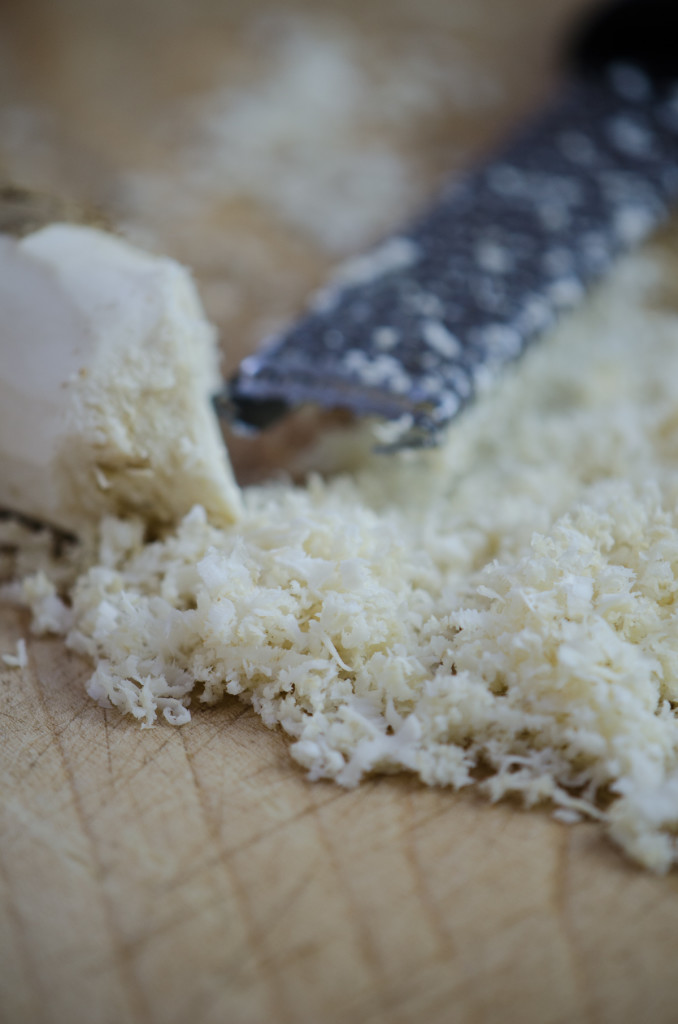 For a dressing with some snap, I settled upon another ingredient frequently paired with both apples, as well as speck antipasti – horseradish, or “cren” as it is called in Trentino-Alto Adige/Südtirol, Veneto and Friuli-Venezia Giulia. In Friuli-Venezia Giulia and Veneto, horseradish is a traditional Easter dish.
For a dressing with some snap, I settled upon another ingredient frequently paired with both apples, as well as speck antipasti – horseradish, or “cren” as it is called in Trentino-Alto Adige/Südtirol, Veneto and Friuli-Venezia Giulia. In Friuli-Venezia Giulia and Veneto, horseradish is a traditional Easter dish.
Insalata di Cavolo Nero, Mele, Noce e Speck
Serves 4
2 ounces speck, 4 slices, not to thinly sliced
1 bunch lacinato kale
1 crisp apple
2 stalks celery, peeled and sliced on the diagonal
1/2 cup toasted walnuts, coarsely chopped.
2 ounces speck, 4 slices, not to thinly sliced
Dressing
1/4 cup extra virgin olive oil
3 tablespoons lemon juice
1 tablespoon freshly grated horseradish, or more, to taste
Kosher salt and freshly ground pepper
Preheat the oven to 300°F.
Place the slices of speck on a sheet pan, and dry in the oven until leathery, about 10 minutes. Remove. They will become crisp as they cool; if they still remain leathery and soft, return to the oven for a few more minutes.
Remove the ribs from the kale leaves, these are a bit tough for a raw kale salad. Thinly slice the kale leaves and place in a large salad bowls. Chop the apple into thin slices, then cut the slices into small strips and add to the kale. Add the sliced celery and walnuts.
Place the olive oil, lemon juice and horseradish into a small container with a tight fitting lid. Shake well. Season with salt and pepper. Pour over the salad and toss well. You can let the salad sit a bit before serving if you wish.
Just before serving, crumble the speck over the salad. If you wish a nice plated presentation, you can reserve a larger piece of the dried speck for garnish.
